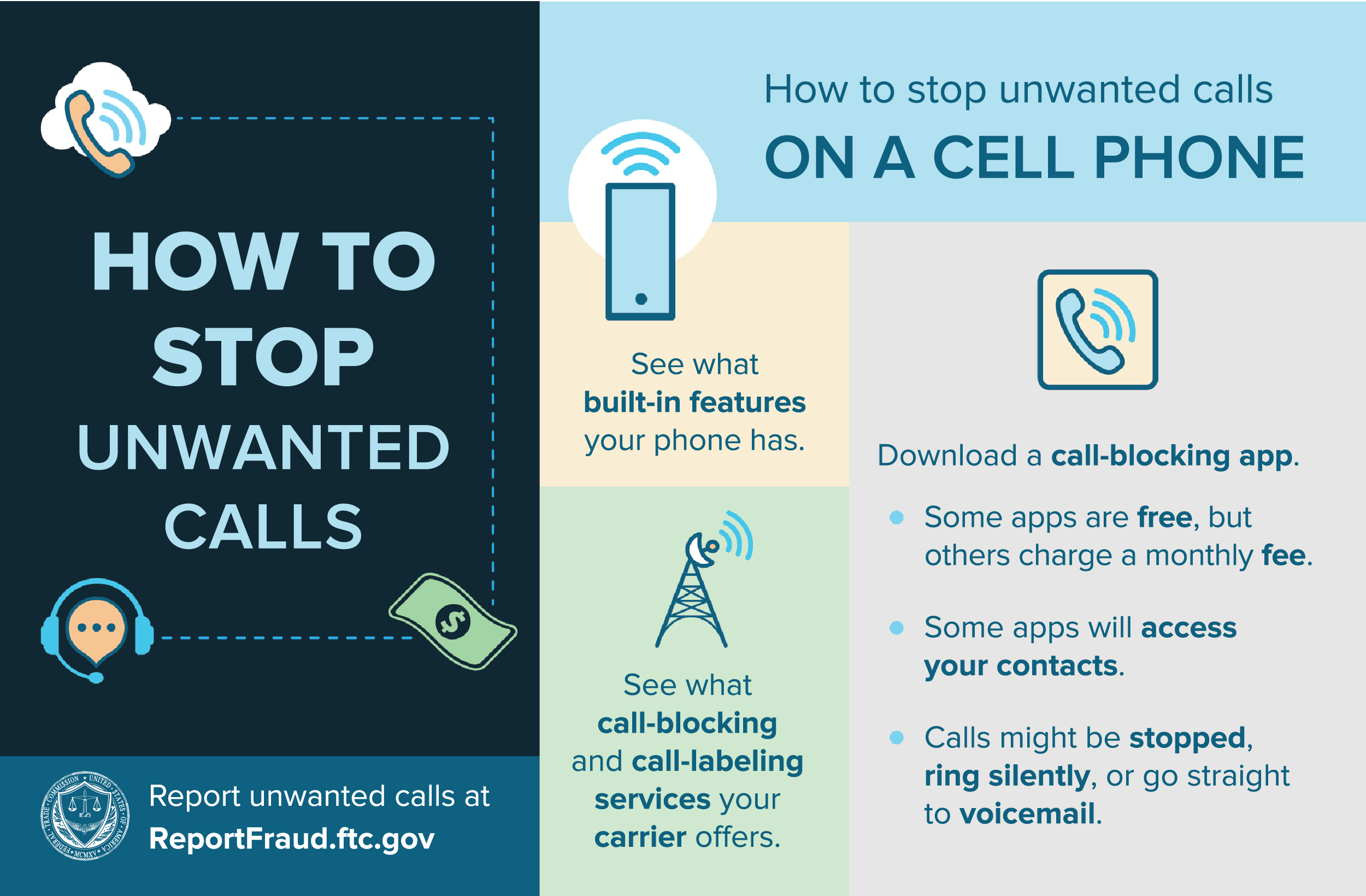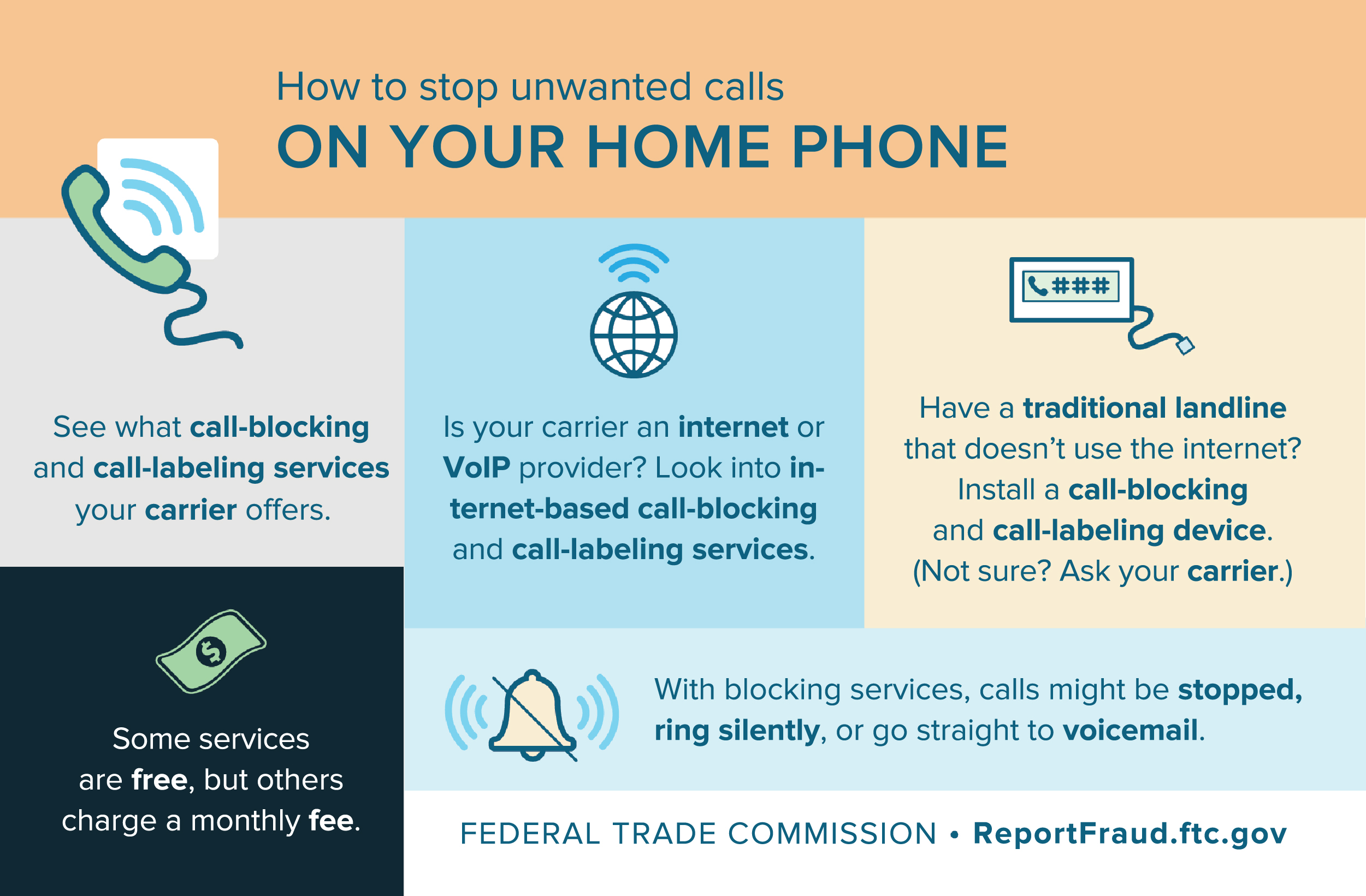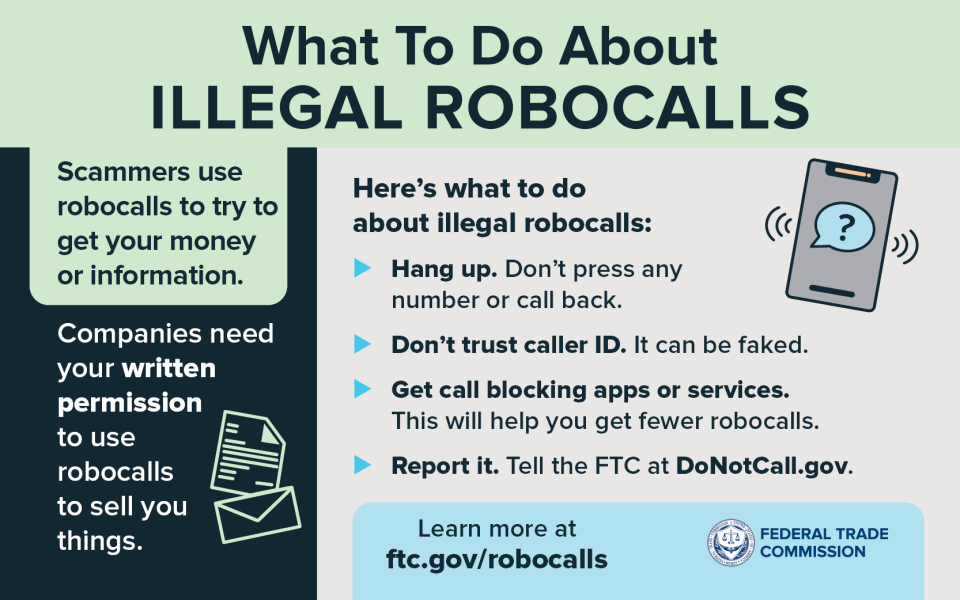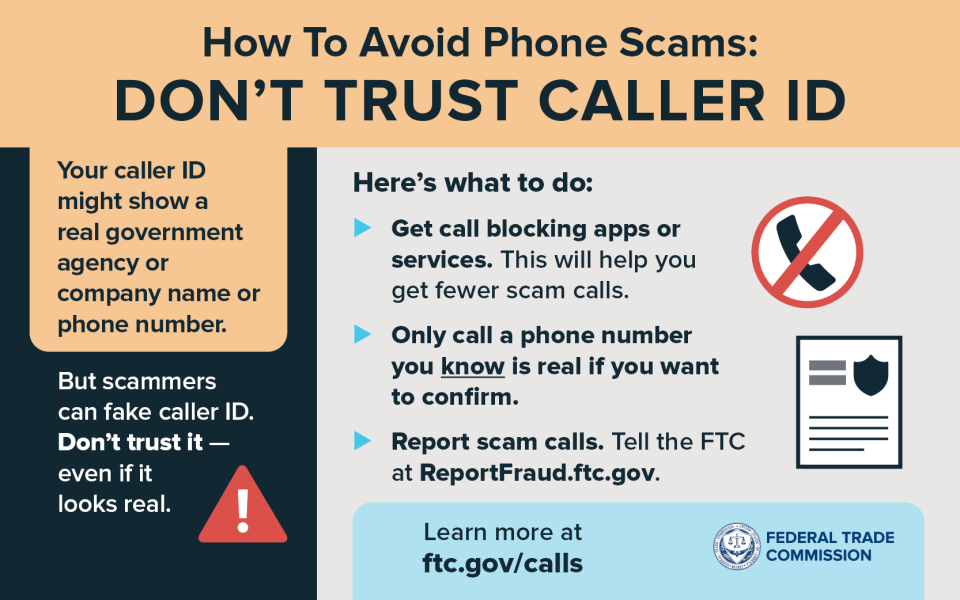Got a phone? Then chances are you get calls from scammers. Scammers don’t care if you’re on the National Do Not Call Registry. That’s why your best defense against unwanted calls is call blocking and call labeling. Here’s how to block and report unwanted calls on cell phones and home phones.
What Are Call Blocking and Call Labeling?
A good way to deal with unwanted calls is to block them. Blocking software or devices can stop a lot of the unwanted calls you get — like scam calls and illegal robocalls — before they reach you. Cell phones, home phones that make calls over the internet, and landlines each have their own call-blocking options. Just know that call-blocking services might block some calls you want to get.
Some companies also offer call labeling. With call labeling, shady calls will still come through, but you’ll see things like “spam” or “scam likely” on your phone’s screen when they do. Then you’ll decide whether to answer the call.
Block Calls on a Cell Phone
Watch this video on how to stop calls on your cell phone
Download a call-blocking app
One of the best ways to block unwanted calls on a cell phone is to download a call-blocking app, which acts like a filter. The company behind the app uses call data or reports from users, the FTC, and other sources to predict which calls are illegal or likely scams. The app then intercepts those calls before they reach you. Some apps are free, but others charge a fee.
To get a call-blocking app
- Go to the online app store for your phone’s operating system (iOS (Apple), Android, etc.) and look at ratings for different apps.
- Look online for expert reviews on call-blocking apps.
- Check out the list of apps at ctia.org, a website from the wireless industry. The site lists apps specific to Android, BlackBerry, iOS (Apple), and Windows.
Apps usually let you choose how to respond to calls they flag as scams. Apps might
- stop calls
- let calls through to your phone but keep it from ringing
- send calls straight to voicemail
Apps also let you do things like
- block calls based on the geographic location or area code of the incoming call
- let you create lists of numbers to block, or lists of numbers to let through
- send a prewritten text message to the caller
- report it to the FTC at DoNotCall.gov, or, if you lost money to the scammer, at ReportFraud.ftc.gov
Some apps access your contacts list, so know whether that’s important to you. The app’s privacy policy should explain how it gets and uses your information.
Check the built-in features of your phone
Many cell phones have settings that let you block calls from specific numbers, though there might be a limit to how many numbers you can block. Cell phones also usually have features like Do Not Disturb, where you can set the hours that calls will go straight to voicemail.
See what services your phone provider offers
Check your phone provider’s website or call customer service to find out what call-blocking or call-labeling services it offers or recommends. Some services are free, but others might charge you a fee.
For links to company-specific information about blocking calls, go to the Federal Communications Commission's (FCC's) Call Blocking Resources.

Block Calls on a Home Phone That Uses the Internet
First find out if your phone uses the internet
Your home phone might have VoIP service. “VoIP” stands for “Voice over Internet Protocol,” and it means that your phone makes calls over the internet instead of phone lines. If you’re not sure what you have, check with your phone provider. If you get your phone service through a cable company, or use a phone/internet/cable bundle, you probably have VoIP service. If you find out you don’t have internet-based phone service, check out how to block calls on a traditional landline.
Read expert reviews on internet-based call-blocking services
Internet-based call-blocking services block unwanted calls on phones that use the internet. While your phone provider might recommend a specific service (which might charge a fee), search online for expert reviews on multiple services. Some services are free and some charge you each month.
Some internet-based services and phone apps require that all calls are routed through their service. You might have choices about how services and apps handle unwanted calls. For example, services and apps might
- stop calls
- let calls through to your phone but keep it from ringing
- send calls straight to voicemail
For links to company-specific information about blocking calls, go to the FCC’s Call Blocking Resources.
Block Calls on a Traditional Landline
Watch this video on how to stop calls on your home phone
Install a call blocking-device
If your home phone is a traditional landline that doesn’t use the internet (VoIP), consider buying and installing a call-blocking device. Call-blocking devices are usually small boxes you attach to your phone.
Some devices use databases of known scam numbers but let you add numbers you want the device to block. Other devices rely on you to create and update your own list of numbers to block.
Some use lists to
- stop unwanted calls
- send calls to voicemail
- show a blinking light when an unwanted call comes in
- connect callers to a recording with options so a real caller can still get through
Some devices also use lists of approved numbers. That helps you limit which calls get through, or lets you set up “do not disturb” hours when calls go straight to voicemail. Other devices try to weed out robocalls by playing a prerecorded message prompting callers to press a number to continue the call.
See what services your phone provider offers
Some services are free, but some charge a fee.
For links to company-specific information about blocking calls, go to the FCC’s Call Blocking Resources.

What About Robocalls?
If you answer the phone and hear a recorded message instead of a live person, it's a robocall. A robocall trying to sell you something is illegal unless the company trying to sell you something got written permission, directly from you, to call you that way. To get your permission, the company has to be clear it’s asking to call you with robocalls. The company also can’t make you agree to the calls to get a product or service.
If someone is already breaking the law by robocalling you without permission, there’s a good chance it’s a scam. Call blocking can help stop robocalls from scammers. But some robocalls might still get through. If you get an illegal robocall, hang up and don’t call back. Don’t press a number, which could lead to more robocalls. Then report it to the FTC.
Learn more at ftc.gov/robocalls.

Fake Numbers on Caller ID
Call blocking technology sometimes stops calls from scammers who make fake names or numbers show up on your caller ID. It’s helpful when your caller ID labels a call as a potential scam. But not all scam calls will get flagged. Scammers often use fake or “spoofed” names and numbers to make it look like a call is from a government agency like the Social Security Administration or the IRS. The caller might say that, if you don’t pay or you refuse to give them your personal information, something bad will happen or you’ll miss out on some government benefit. It’s a scam. Learn more about common phone scams.
There’s also something called “neighbor spoofing,” where scammers call you using a caller ID number with your area code. They often match the first six digits of your phone number, thinking that you’ll be more likely to answer the call if it looks like it’s coming from someone nearby. Often the faked name and number belong to a real person who has no idea someone is misusing their information.

What About the National Do Not Call Registry?
The National Do Not Call Registry is designed to stop sales calls — live calls or robocalls — from real companies that follow the law. The Registry is a list that tells registered telemarketers what numbers not to call. Being on the Registry won’t stop scammers from making illegal calls.
Even though the Registry can’t stop all of the unwanted calls you’re getting, being on the Registry should reduce the number of calls you get and make it easier for you to spot scam calls. If you get a robocall, and you haven’t given the caller written permission to call you with robocalls, the call is illegal, period. It doesn’t matter if your number is on the Registry or not.
Report Unwanted Calls
If you didn’t lose money and just want to report a call, visit DoNotCall.gov to fill out a reporting form.
If you’ve lost money to a phone scam or have information about the company or scammer who called you, report it at ReportFraud.ftc.gov.
Report the number that received the call, the number that appears on your caller ID — even if you think it might be fake — and any number you’re told to call back. Also report the date and time of the call, if you’re able to. The FTC analyzes complaint data and trends to identify illegal callers based on calling patterns. We also use additional information you report, like any names or numbers you’re told to call back, to track down scammers.
We take the illegal callers’ phone numbers you report and release them to the public each business day. This helps phone companies and other partners that are working on call-blocking and call-labeling solutions. Your reports also help law enforcement identify the people behind illegal calls.
